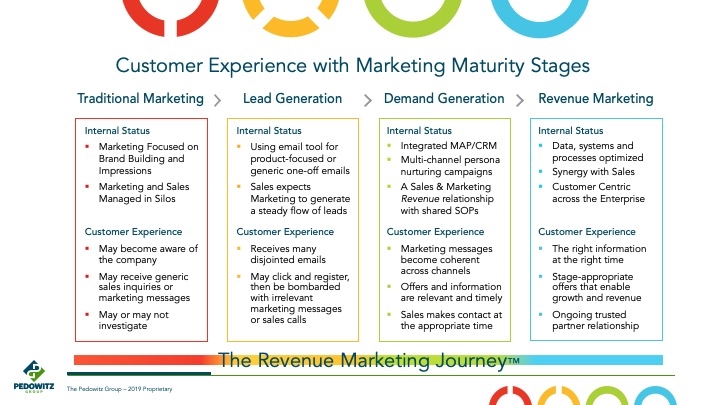When Marketing Prospects Don’t Want to Play Your Way | Lessons in Customer Experience part 1


Before we get into our first lesson, let’s take a look at a specific definition for customer experience:
Customer experience is a series of touchpoints across any channel that shapes how a customer or prospect feels about a brand.
Marketers must leverage that feeling to create a positive experience that fosters an ongoing relationship. In today’s digital world, the majority of that relationship happens without human interaction and mostly digitally. When done right, the experience is controlled by the brand, not by the user. The brand has a clearly defined experience about what that experience should be because we are able to anticipate their behavior based on previous data. We are curating an experience that feels self-driven, but is actually very tailored based on customer data insights that the brand gathers.
B2B Marketers in the traditional phase of revenue marketing are just beginning to consider a customer-centric strategy that yields an ideal customer experience. Since this is the beginning of the journey, the customer is unfortunately left behind. Customers and prospects must roam several digital properties to get a better idea of how to solve their problems. The brand seems tone-deaf to their behavior and this makes it very difficult for customers to evaluate their options.
What happens when customer experience is handled poorly? Let’s take a look:
Company X has just built a new eCommerce site and is considering adding an extra layer of cybersecurity. VP Bob volunteers to research the product category. Google points him towards Acme, a mature leader in the space, and he downloads a comparison guide, but it finds it difficult to determine if Acme is comparing apples-to-apples with other vendors. And once he signs up, Acme bombards him with emails. Bob gets an irrelevant email almost every day and Acme ads show up on his favorite sites. But instead of making his due diligence easier, all these random touches are making it more confusing. Then the sales calls start…and he can tell Acme know nothing about him or Company X. It seems clear that Acme wants to do business on their terms, not his. How is Bob to proceed?
If Bob’s story sounds familiar, it’s because we all regularly engage with companies that respond poorly. Despite many advances in B2B Marketing tools, techniques and tactics, most companies have yet to tie all that together for the benefit of the prospective client. The result can be huge gaps between a prospect’s desired shopping experience and reality.
If you feel as if this may be hitting a little too close to home, the good news is that you are not alone. Many of the world’s top B2B brands are struggling to integrate customer experiences. It’s not unusual for these companies to spam prospects from their various business units without being aware. B2B organizations need to refocus the disparate marketing and sales processes on the Customer Experience. Instead of spraying emails, Marketing learns to nurture prospects with relevant offers based on their digital body-language – the right message at the right time in the right format and channel. Sales learns to engage at the right time, tailoring their approach based on prospect actions. All customer touchpoints become orchestrated.
Focusing on the customer’s purchase experience versus your company’s requirements will take your customer relationships to a new level. When Bob gets the right sales, service and support, he will be happy to engage. Acme will purchase, buy more, renew, and even advocate. You’ll see breakeven, profitability and maximum life-time value.
If your prospects don’t want what to play it your way, consider adapting to their needs. The easier you make their lives, the more they will support you – a win-win outcome.
Approaching the shift to customer-centricity is a big job, but we’d love to help! This quarter we are running a three-part digital workshop free of charge entitled, “How to Adopt Customer Centricity in a Product-Centric World” led by Debbie Qaqish, our Chief Strategy Officer. Every attendee will receive a workbook to help craft their plan during the sessions. We will also host office hours in between sessions where anyone can join to ask specific questions on how to build your plan.
(102)








